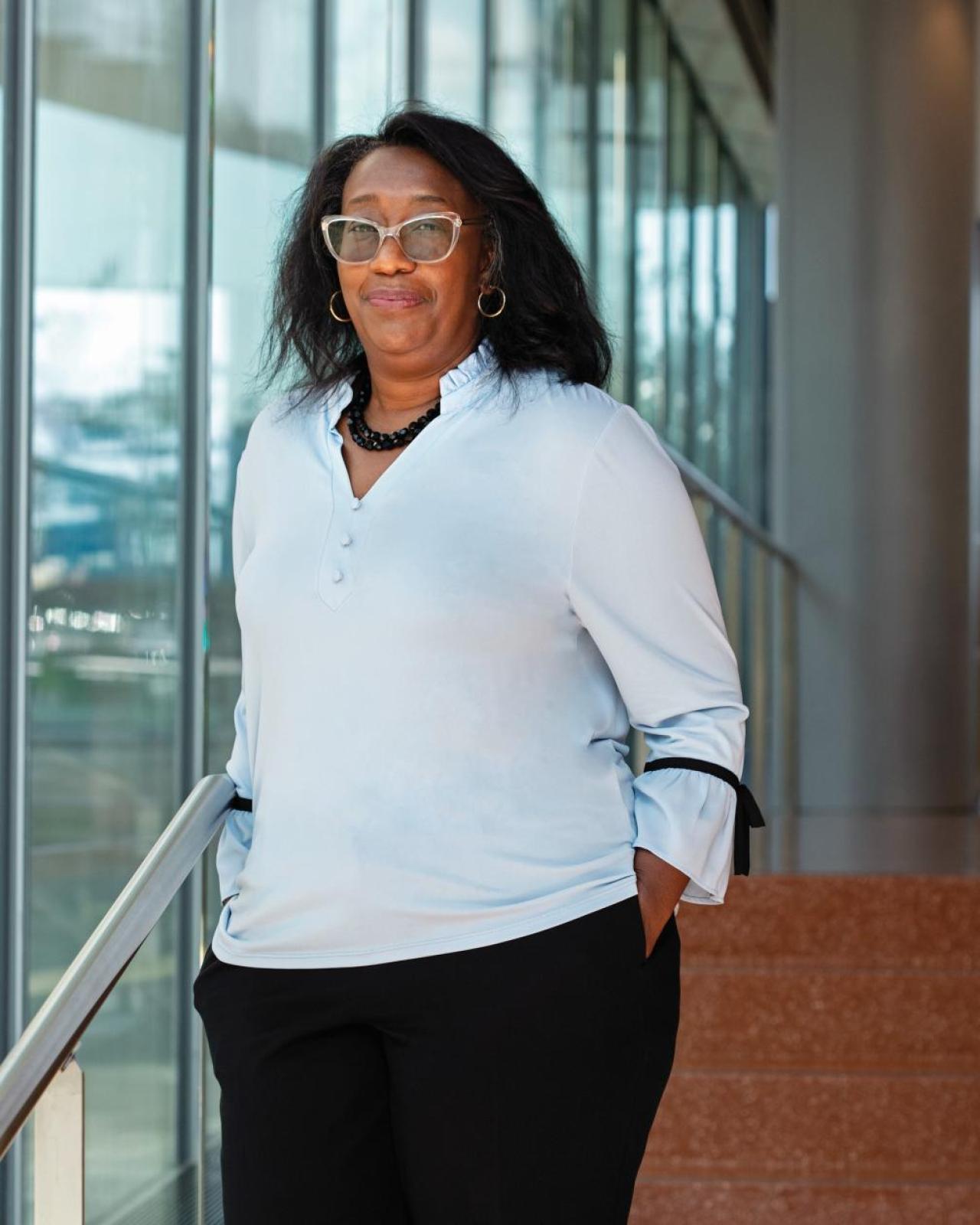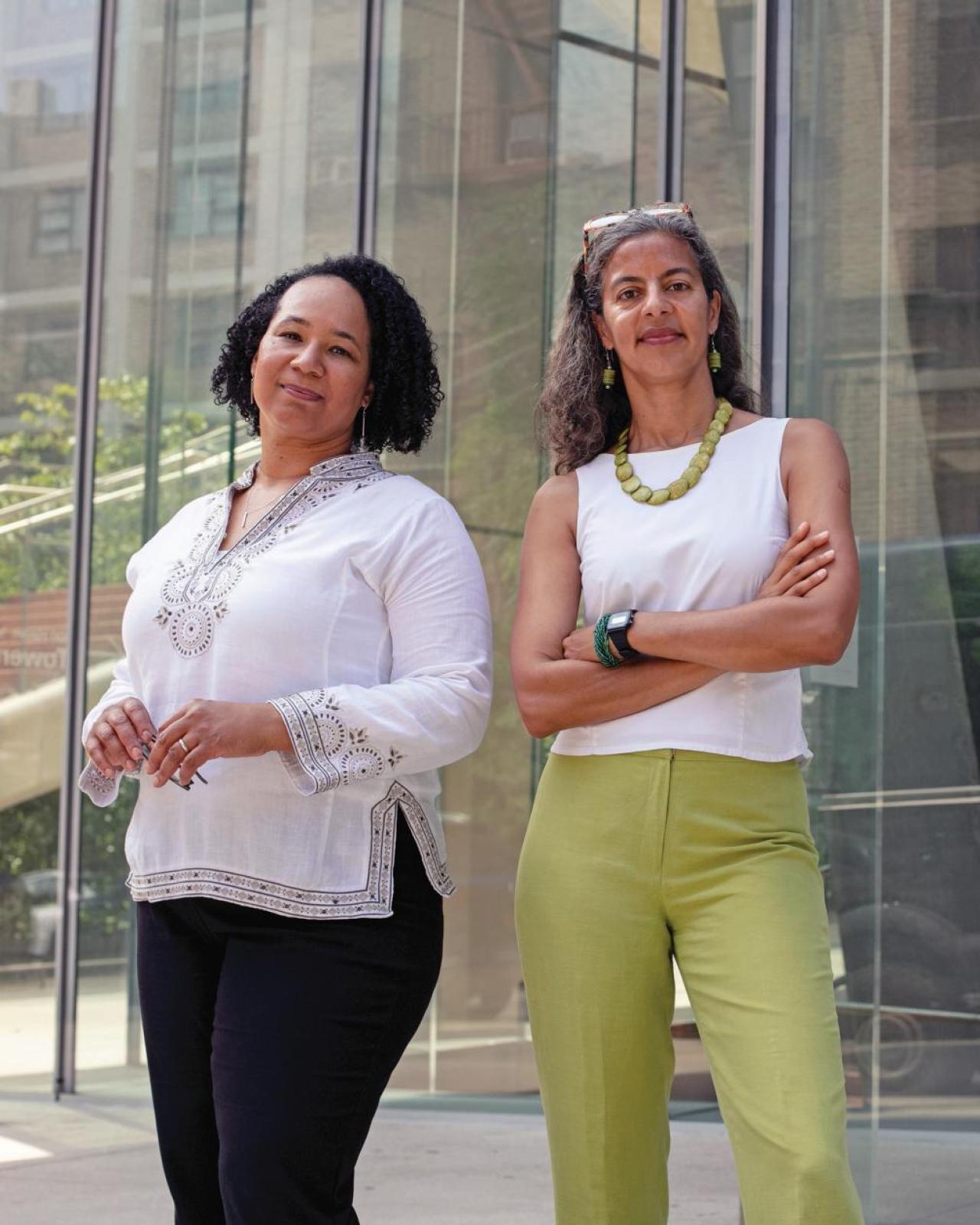The death of George Floyd at the hands of police-combined with the disparities highlighted by the COVID-19 pandemic-spurred a racial awakening across the United States in 2020. The flurry of activity that started then at VP&S has not abated. VP&S students, faculty, and staff have initiated more than a dozen efforts to chip away at the massive undertaking of dismantling the effects of systemic racism in medical education.

Maya Jalbout Hastie, MD, associate professor of anesthesiology, and her fellow faculty in anesthesiology developed virtual improvisation sessions-inspired by true events-to help department members handle racist microaggressions in the workplace. Devon Rupley, MD, assistant professor of obstetrics & gynecology, along with two medical students, Stephanie Granada'21 and Cibel Quinteros-Baumgart'22, conducted one of the first studies to understand the birthing experiences of Spanish speakers during the early days of the pandemic in New York City. And medical student Jeremiah Douchee joined the Columbia chapter of White Coats for Black Lives, an organization run by medical trainees that aims to end racism and systems of oppression in health care.
Despite these efforts by members of the VP&S community, racism remains a systemic problem and demands a systemic solution. So in October 2021-as VP&S welcomed its most diverse medical student class in history-Hastie, Rupley, Douchee, and a dozen other stakeholders joined forces to form the executive coalition of the school's Anti-Racist Transformation (ART) in Medical Education project, perhaps the most comprehensive effort yet to undo systems of racism and bias in education at VP&S.
"Gathering a group of individuals across the workplace spectrum has been instructive on what it means to be inclusive," says Monica L. Lypson, MD, vice dean for education. "Having students, staff, and faculty working in collaborative fashion to create an anti-racist educational environment is key to future success."
Creating an anti-racist strategy
ART in Medical Education is a framework developed by the Icahn School of Medicine at Mount Sinai that brings a three-year, systemic approach to the effort, charging medical schools with creating a transformative, ongoing anti-racist strategy. (As opposed to being passively "not racist," the term "anti-racist" refers to taking an active approach in countering systems of racial prejudice.) By participating in the project's inaugural cohort of 11 schools in the United States and Canada, VP&S is building on the efforts of its anti-racism task force, which called for advances in curriculum, admissions, student support, and the learning environment.
The ART in Medical Education executive coalition at VP&S is led by Jean-Marie Alves-Bradford, MD, associate professor of psychiatry and inaugural director of the Department of Psychiatry's Office of Equity, Diversity, and Inclusion, and Hetty Cunningham, MD, associate professor of pediatrics and director of equity and justice in curricular affairs at VP&S. The ART project continues the work they did together to develop workshops for medical students processing racial trauma.
"Bias can creep in in lots of different ways. Even when we think it's far removed from the actual individual patient."
"It does really help to be a part of this team effort," says Alves-Bradford. "We're all coming from different disciplines, but with some similar experiences in those disciplines. Working together toward change, regardless of our area of expertise or particular focus, is not just bonding, it's motivating and strengthening and reinforcing that commitment."
When the project officially launched in October 2021, Cunningham says, the VP&S executive coalition began mapping out the disparate anti-racism efforts already taking place at Columbia to build a roadmap for organizational change. "What are the priorities of the institution that are documented, that have been expressed, that have been accepted? How can we work with those? Who are the main allies in this work? Who needs to be included? The idea is to come together and create a cohesive movement."
Guided by those findings, the coalition narrowed its focus to three core areas: curriculum, faculty retention, and integrated care.
Addressing the learning environment
To address curriculum, the executive coalition developed anti-racist learning objectives using a framework drafted by the Association of American Medical Colleges. The objectives aim to help students and faculty understand the term "anti-racist," says Alves-Bradford, and to define and operationalize what it means to create an anti-racist learning environment and health care system. Some of the objectives focus broadly on systems and practices, she says, while others drill down into specifics, such as how the medical school approaches basic sciences.
"We think about how the objectives would evolve over time throughout the curriculum," says Alves-Bradford, "to get deeper and more complex as students go from preclinical to clinical."
The learning objectives include understanding how a physician's personal biases and lived experience can influence clinical decision-making-and their interactions with patients, patients' families, and other members of the care team-and learning how to mitigate the effects of those biases. Another key element involves studying how societal structures might have played a role in a patient's health care experience. For instance, a person might have an increased risk of diabetes and heart disease if they live in a neighborhood that lacks access to affordable, healthy food. "Bias can creep in in lots of different ways," Alves-Bradford says, "even when we think it's far removed from the actual individual patient."
"We want our students to be able to be active in the space of anti-racism. Not only will they have the knowledge, but they'll know how to advocate for changes in medicine."
It's important to include anti-racist learning objectives as part of the curriculum, Cunningham says, because it means those skills will be formally assessed. "If something isn't assessed, then it's not taken seriously," Cunningham says. "We want our students to be able to be active in the space of anti-racism. Not only will they have the knowledge, but they'll know how to advocate for changes in medicine. The faculty are in agreement that that's something we want our students to be able to do, so we have to shift the curriculum."
Work toward an anti-racist medical education system also has implications for recruitment and retention, Alves-Bradford says. As workers nationwide reconsider their professional aspirations and work-life balance in wake of the pandemic, she notes, now is the time to consider systemwide structures that would help VP&S recruit and promote the best faculty, staff, and students.
Segregated care
Finally, while the idea of segregated health care might seem like a relic of the past, Alves-Bradford says a patient's health insurance coverage often dictates whether that person is treated at a faculty practice or a public clinic. Different providers work in these separate settings, and the differences don't end there. Faculty practices and public clinics have disparate resources, she notes, from technology to staffing ratios and even the ambiance of the setting in which patients receive care.

The Center for Clinical Medical Ethics at VP&S hosted a symposium in May on segregated health care. The center's director, Lydia S. Dugdale, MD, the Dorothy L. and Daniel H. Silberberg Associate Professor of Medicine at VP&S, gave the opening remarks. After public health experts outlined the history and policy that shapes how people receive care, a panel of physicians discussed ongoing efforts to desegregate care. Panelists included Julia E. Iyasere, MD, assistant professor of medicine and executive director of the Dalio Center for Health Justice at NewYork-Presbyterian. Kamini Doobay, MD, assistant professor of emergency medicine, closed the event by providing the attendees with ways to advocate for individual patients and for systemic changes.
The ART in Medical Education coalition at VP&S plans to use its platform to publicize the issue and educate the Columbia community about segregated care. "What are some of the pitfalls when things are structured in that way?" Alves-Bradford asks. "What is the context? How did those systems evolve to be that way? There were regulations that led it to be one way or another: How does that happen?"
The coalition has joined ongoing efforts, including White Coats for Black Lives and the NYC Coalition to Dismantle Racism in the Health System, to push for an end to this divided system. "We're advocating for not having those systems segregated," says Alves-Bradford, "to integrate and have people seen in similar settings, regardless of their insurance or payment."
Beyond their work on curriculum, faculty retention, and integrated care, the VP&S coalition is considering ways to support and recognize students involved in anti-racism work. Also on the horizon: involving more participants from the greater VP&S community and the city at large.
"We're advocating... to have people seen in similar settings, regardless of their insurance or payment."
As the ART in Medical Education project enters its second year, the VP&S coalition and the rest of the inaugural cohort of schools are moving into the next phase of the project: implementing and sustaining change at their various institutions. While each of the 11 medical schools aims to embed change, learn from feedback, and course correct to develop transformative, ongoing anti-racism strategy, the cohort also plans to come together to learn from each other.
"The cohort allows us to partner with institutions around the country that are doing very exciting things," Cunningham says, "We're sharing our challenges and solutions. That allows us all to move forward more quickly and adopt best practices."
References
More information
This article was originally published in the 2021-2022 VP&S annual report issue of Columbia Medicine magazine.
Jean-Marie Alves-Bradford, MD, also is the inaugural associate dean for medical school professionalism in the learning environment at VP&S.






